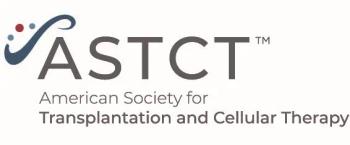
Oncology NEWS International
- Oncology NEWS International Vol 19 No 1
- Volume 19
- Issue 1
Combination Rx with cytokine optimizes response in anemic MDS patients
Patients with lower-risk myelodysplastic syndromes and anemia can derive long-term benefits from erythropoietin and myeloid growth factor hormones, according to a study in Blood.
Patients with lower-risk myelodysplastic syndromes and anemia can derive long-term benefits from erythropoietin and myeloid growth factor hormones, according to a study in Blood.
The data bolster results from earlier studies that also have demonstrated the efficacy of adding myeloid growth factor hormones (granulocyte colony-stimulating factor, G-CSF) to erythropoietin (EPO) and higher EPO doses for enhancing erythroid responses in myelodysplastic syndromes (MDS), said the study's lead author.
“These findings support the use of this cytokine combination [EPO and G-CSF] to help optimize erythroid responses for MDS patients,” said Peter L. Greenberg, MD, a professor of medicine emeritus at Stanford Cancer Center in Stanford, Calif. “We believe long-term data from our prospective randomized study, with a median follow-up of 5.8 years, provide valuable new information.”
Previous reports in patients without MDS have suggested that treatment with EPO and other hematopoietic cytokines is associated with enhanced adverse events. The results of the present trial suggest that patients with MDS may have different biologic and clinical features that are amenable to this approach, he said.
The prospective, randomized phase III study was designed to evaluate the efficacy and long-term safety of EPO with or without G-CSF plus supportive care (53 patients) vs supportive care alone (57 patients). Patients were assigned to several steps and then crossed over on the basis of their response to treatment (see Table). Erythroid responders were supposed to remain on the treatment regimen for one year (Blood 114:2393-2400, 2009).
The response rates were 36% vs 9.6%, respectively, at the four-month evaluation point. At this time point, 29% of the EPO arm vs 51% of the supportive care arm were still receiving red blood cell transfusions. The response rate was 46.6% in the EPO arm for all four treatment steps.
Responses were particularly evident for patients with lower serum EPO levels and for patients with lower marrow blast percentages. Furthermore, the study showed that the combination of EPO plus G-CSF was useful in patients who did not respond initially to EPO or who had a transient response. Higher doses of EPO improved the erythroid response in patients who did not respond to initial treatment.
Overall survival was similar for both arms: 3.1 years for the EPO plus supportive care arm and 2.6 years for supportive care alone. Transformation to acute myeloid leukemia (AML), which is a concern in MDS, was not different in the two groups, even when considering crossovers from supportive care to EPO. A subset analysis showed that erythroid responders had significantly improved survival compared with nonresponders (median of 5.5 years vs 2.3 years).
“We saw no negative effects of EPO plus or minus G-CSF treatment on morbidity, survival, or AML evolution in this study when lower-risk anemic MDS patients received EPO with or without G-CSF,” Dr. Greenberg said.
He also said that these findings are important, given the recent FDA alerts regarding use of erythropoietin-stimulating agents, which were based on increased mortality and possible tumorigenesis in patients without MDS who were receiving these agents with palliative intent. The study also suggests that EPO and G-CSF are safe in lower-risk MDS patients.
“We saw substantial clinical benefit from treatment with these hematopoietic cytokines, without additional evidence of enhanced adverse events compared with supportive care alone,” he said.
Vantage Point
Study offers confirmatory data
The present study supports previous assumptions about EPO therapy in MDS, according to Dr. Stone, director of the leukemia program at Boston’s Dana-Farber Cancer Institute.
“First, about one in three patients with lower-risk MDS will respond to EPO, especially if the baseline serum EPO level is below 200 IU/mL,” he said. “Second, the addition of G-CSF to EPO promotes responses, particularly, but not exclusively, in refractory anemia with ringed sideroblasts patients.”
Most important, the study confirmed that EPO therapy is safe in MDS, since during the almost six-year follow-up period no gross excess of leukemias was seen in patients who received EPO. Dr. Stone pointed out that the crossover design of the study diminished the ability to see a difference, since many patients assigned to the supportive care arm eventually crossed over to the EPO arm.
Dr. Stone said that the dose of EPO used in this study (starting at 150 mg/kg per day) is not practical and is rarely used in the community. “This limits how generalizable these findings are. However, overall, this study does provide support for the use of EPO plus G-CSF in patients with lower-risk MDS,” he stated.
Articles in this issue
almost 16 years ago
Extended analysis of BIG trial results confirms drug benefitsalmost 16 years ago
Proton-beam Rx reduces prostate cancer recurrencealmost 16 years ago
TKI inhibitors turn in mixed results in breast canceralmost 16 years ago
Obese breast ca patients carry greater recurrence riskNewsletter
Stay up to date on recent advances in the multidisciplinary approach to cancer.

















































































